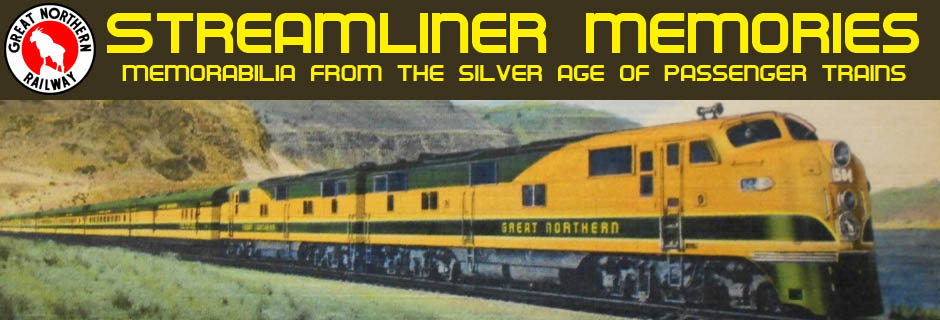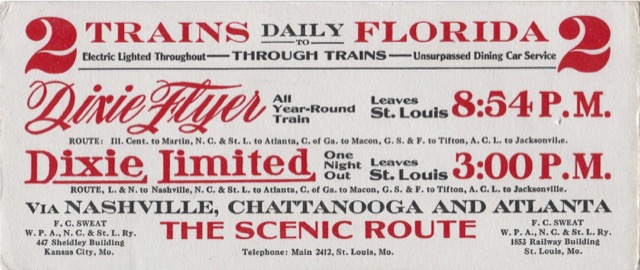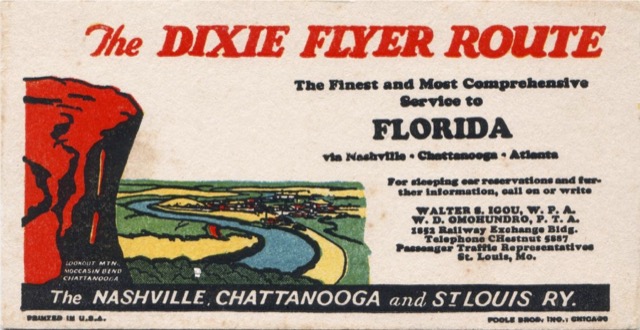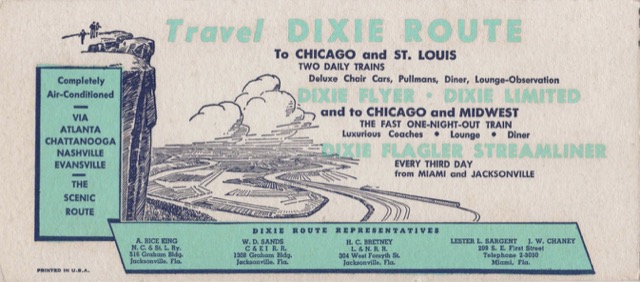No single railroad had a line all the way from Chicago to Florida, and some trains journeyed over six different railroads just to get to Jacksonville. The one railroad these Dixie Route blotters from the Dale Hastin collection have in common is the Nashville, Chattanooga & St. Louis, which carried the trains between Nashville and Atlanta. Although largely if not entirely owned by the Louisville & Nashville, the NC&SL remained a separate railroad until 1957.
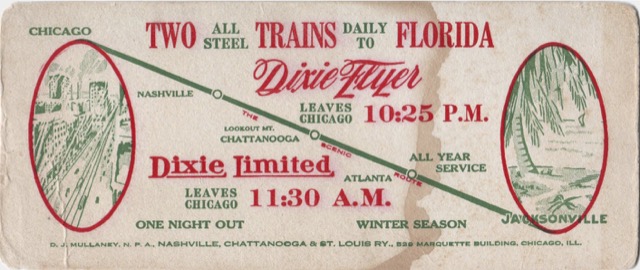
Click the image of any blotter to download a 300- to 500-KB PDF of that blotter.
This blotter advertises two trains, the Dixie Flyer and the Dixie Limited. However, it was issued by the Nashville, Chattanooga & St. Louis and doesn’t mention any other railroads. Randy Newman wrote a song called Dixie Flyer, but it was about a trip from Los Angeles to New Orleans, so he was using poetic license to move the train’s route.
This blotter advertises the same two trains, indicating that the Dixie Flyer used the Illinois Central on the western-most leg of its journey, and the Dixie Limited used the Louisville & Nashville. The blotter doesn’t say so, but the L&N didn’t reach Chicago, so the train probably went on the Chicago & Eastern Illinois to Evansville, where it met the L&N.
Here’s another Nashville, Chattanooga & St. Louis blotter that features Chattanooga’s Lookout Mountain. The Wikipedia photo below by Torsten Henning shows that, except for the colors, the view from the mountain is much the same today as suggested by the blotter.
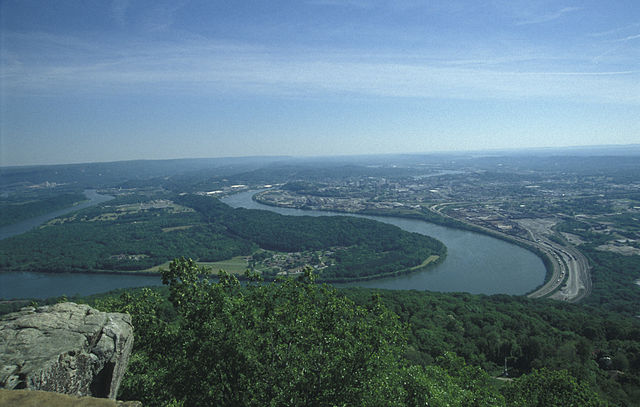
The final blotter, which also has a Lookout Mountain view, advertises that the trains are “completely air conditioned.” That suggests it is newer than the others. I suspect the first two blotters are from the 1920s, the third one is from the early 1930s, and the one below is from around 1940, as it mentions the Dixie Flagler, which started operating on an every-third-day schedule in that year.
